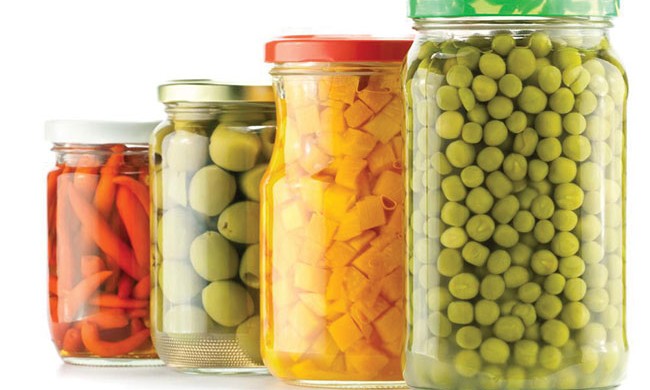by Liana Robberecht

Pickling has found its way onto the What’s Hot Culinary Trend List for 2014. However, if you take a deeper dive into the brine, you’ll find that pickling is far from modern. In fact, it’s been around since 7th century BC.
Before refrigeration methods of preservation were widely available, pickling was the primary method to conserve food. Crossing geographical, socioeconomic and religious boundaries, pickles really hit their stride as a food preservation effort in 16th century Europe with the arrival of a number of new foods from abroad.
A recent trip to Spain showed me that the tradition is still alive and kicking in Europe. The pickles at the Valencia market — the most wonderful pickled onions I have ever tasted — reinforced my own personal love of pickling.
The process of pickling itself simply means to preserve food in acid (i.e. vinegar). Vinegar is made when starches and sugars are fermented into alcohol and then oxidized by the addition of certain types of bacteria. These bacteria create acetic acid, the preserving ingredient in vinegar.
With such a broad definition, there is plenty of room for chefs to play. This time of year in the Calgary Petroleum Club kitchen the team is obsessively pickling everything in sight, from cherry tomatoes to stone fruit. Just about anything you can think of can be pickled: walnuts, onions, carrots, cauliflower, celery, cherries and apricots, to name a few. Each food produces a unique flavour, which can be enhanced by varying the vinegar or brine one uses (for example; malt, apple cider, rice or white balsamic). Wines, beers and ciders can be transformed into delicious vinegars that create diverse flavour foundations for your pickles.
Different salt and spice combin-ations (bay leaves, pepper-corns, cloves, star anise and tarragon) can perfect the balance between food and acid. By playing with spices, you can create endless flavour combinations ranging from sweet to spicy, tart to savoury.
In addition to the taste, Chinese culture teaches that fermented and pickled foods play a large role in digestive health. My friend Nicole Gomes of Nicole Gourmet Catering (and the season three sweetheart of Top Chef Canada) says that the tradition of pickling holds a special place in her heart due to her Chinese background. Chef Nicole upholds tradition by salt-pickling radishes and bamboo shoots, and she innovates the genre with an Asian take on an old German favourite, turning pork and sauerkraut into pickled mustard greens with braised pork belly.
Pickling has a rich history with endless possibilities. Once you understand the foundational elements, you can begin to experiment with pickles of your own. Choose a pickling subject, vinegar and spice combination and get pickling.
When life gives you lemons, make lemonade. If life hands you anything else, pickle it.
Roasted golden beet, swiss chard and pickled onion salad